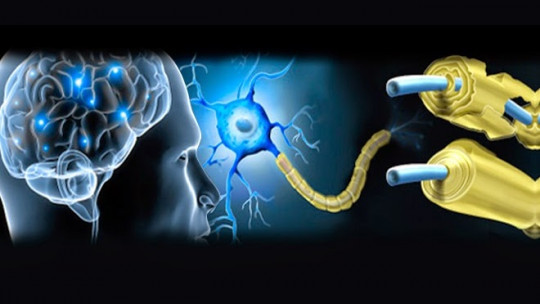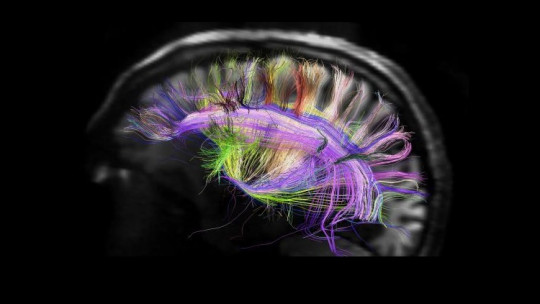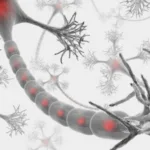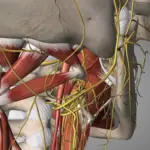
Our nervous system transmits large amounts of information throughout the body.allowing us to think and have physical, cognitive and emotional skills and abilities. It also directs and keeps the different organs and systems of our body functioning.
For all this, the neurons that are part of the nervous system connect with each other forming structures, tracts and nerves, which project to the rest of the body. But the information they carry needs to reach its objective as quickly as possible, given the need to coordinate actions or react in time to environmental stimuli. Achieving such speed is possible thanks to a substance called myelin, a substance that allows the acceleration of the nervous impulse.
This transmission of information also allows us to: However, there are some problems and diseases that cause myelin to not act correctly or to be destroyed, causing a slowdown in the transmission of impulses and potentially causing serious problems in the person’s vital functioning. One of the most common disorders of this type is multiple sclerosis..
What is multiple sclerosis?
Multiple sclerosis is a chronic, progressive and currently incurable disease. in which progressive demyelination of the nervous system occurs. This demyelination is caused due to the action of the immune system, which attacks the myelin present in neurons and causes their destruction.
Small scars are also generated in the form of a hardened plaque that makes it difficult for the nervous stimulus to pass through. The loss of myelin, together with the presence of these scar plaques, causes the information carried by the nerve fibers to take longer to reach its destination at the neuronal level, causing great difficulties for those who suffer from it.
Symptoms of the disease
The symptoms of this disorder will depend on the areas that are demyelinated, but broadly speaking, it is common for those who suffer from it to suffer from fatigue, muscle weakness, incoordination, vision problems, pain and/or muscle tension.
Although initially it was believed that it was a disease that only caused physical symptoms, it has been detected that throughout the course of the disease intellectual impairment also occurs, with frequent deterioration of the frontal area and therefore of executive functions. and cognitive.
Multiple sclerosis is a disorder that occurs in flaresgenerally occurring partial recoveries once the outbreak subsides. This is because although myelin is destroyed by the immune system and the oligodendrocytes that produce it are incapable of regenerating it, the body sends stem cells to the damaged areas that, over time, transform into new oligodendrocytes and generate new myelin.
This new myelin is not as effective or resistant as the original one due to the presence of damage to the axon, so subsequent attacks by the immune system will weaken the connections and the subsequent recovery will be less, which in the long run produces a progressive degeneration.
Causes
As we have said before, multiple sclerosis is an autoimmune disease.which through the attack and elimination of myelin from neuronal axons causes a whole series of effects derived from poor transmission of the nervous impulse. Thus, the mechanisms through which it acts are already in our body. However, the causes of this attack remain a mystery to this day, with no clear reason to explain this impact.
Some of the most accepted theories indicate that those who suffer from multiple sclerosis have a genetic vulnerability that, upon the arrival of some type of environmental stimulus such as an infection, causes the immune system to react in the wall of the blood vessels that irrigate the brain, crossing the blood-brain barrier and attacking the myelin of neurons.
Types of multiple sclerosis
As indicated, multiple sclerosis is a disease that occurs in the form of outbreaks. But these outbreaks do not always occur in the same way or with the same intensity, and there may be different courses of the disorder. Based on the course you take, the existence of different subtypes of this disease can be considered.
1. Relapsing-remitting multiple sclerosis
The most frequent subtype and courseIn this type of multiple sclerosis, unexpected and unpredictable symptomatic outbreaks arise that over time end up disappearing, resulting in both remission and symptomatic recovery. This recovery between outbreaks can be partial or even complete. Symptoms do not worsen during the intervening periods.
2. Primary progressive multiple sclerosis
One of the least common types, in this subtype of sclerosis specific outbreaks cannot be identifiedbut progressively symptoms are seen that get worse little by little. In this case there are no periods of remission or recovery (or at least not of great importance). However, on some occasions it can park.
3. Secondary progressive multiple sclerosis
As in the relapsing-remitting form, different unexpected outbreaks are observed in this type of multiple sclerosis. and unpredictable. However, in the periods in which the outbreak has ceased, the patient’s degree of disability does not improve but in fact worsening can be observed, this being progressive.
4. Relapsing or relapsing progressive multiple sclerosis
As with the primary progressive form, progressive worsening occurs in this rare subtype and without periods of remission, with the difference that in this case specific outbreaks are recognizable.
5. Benign multiple sclerosis
Sometimes identified with relapsing-remitting sclerosis, this type of multiple sclerosis gets its name because, despite the presence of flares, the patient’s recovery from them occurs completelyhaving milder symptoms and apparently not worsening over time. The disability it causes is very small.
In search of a treatment
Although multiple sclerosis currently has no cure, There are a large number of pharmacological treatments that can be used to alleviate and delay the progression of the disease.. Likewise, symptoms can be controlled, their severity reduced and the patient helped to maintain their quality of life.
Some of the medications used include corticosteroids to reduce the severity of flares, analgesics in cases of pain, or immunosuppressants to alter the course of the disease and reduce the level of deterioration.
Drugs
But although these treatments do not cure the disease, research continues and progress is made in the search for a cure for multiple sclerosis. Some of the latest research has gone so far as to test and conduct trials with a drug called Ocrelizumab, which has been shown to be able to delay the progression of symptoms in the initial phases of the disorder.
Although the problem itself is neurological and therefore is treated medically, the difficulties caused by multiple sclerosis usually cause difficulties and problems that affect the psyche of those who suffer from it. It is common that upon detection of the disease, patients suffer mourning processes due to the progressive loss of faculties, and even suffer depressive episodes.
Therefore, it may be useful to also work from a psychological perspective, increasing the patient’s level of emotional expression regarding their situation and working on it, as well as ensuring that they see the situation in a realistic way and that behavioral avoidance, isolation does not occur. or self-destructive behaviors.
occupational therapy
Specifically, it has been shown to be of some use to use occupational therapy when it comes to increasing autonomy. and the patient’s level of activity and participation in support groups as a method of expressing and sharing feelings and points of view regarding the disease, its consequences and ways of coping with life with other people with multiple sclerosis. It is one of the most effective therapies when it comes to mitigating the psychological impact of symptoms.
Family and social support is essential in cases of multiple sclerosis, since it allows the person to cope with day-to-day life and makes them see that they are not alone or helpless. Also the use of devices such as wheelchairs and bars can help the patient maintain a certain autonomy for longer, in addition to helping to reduce the level of disability caused by the disease.








